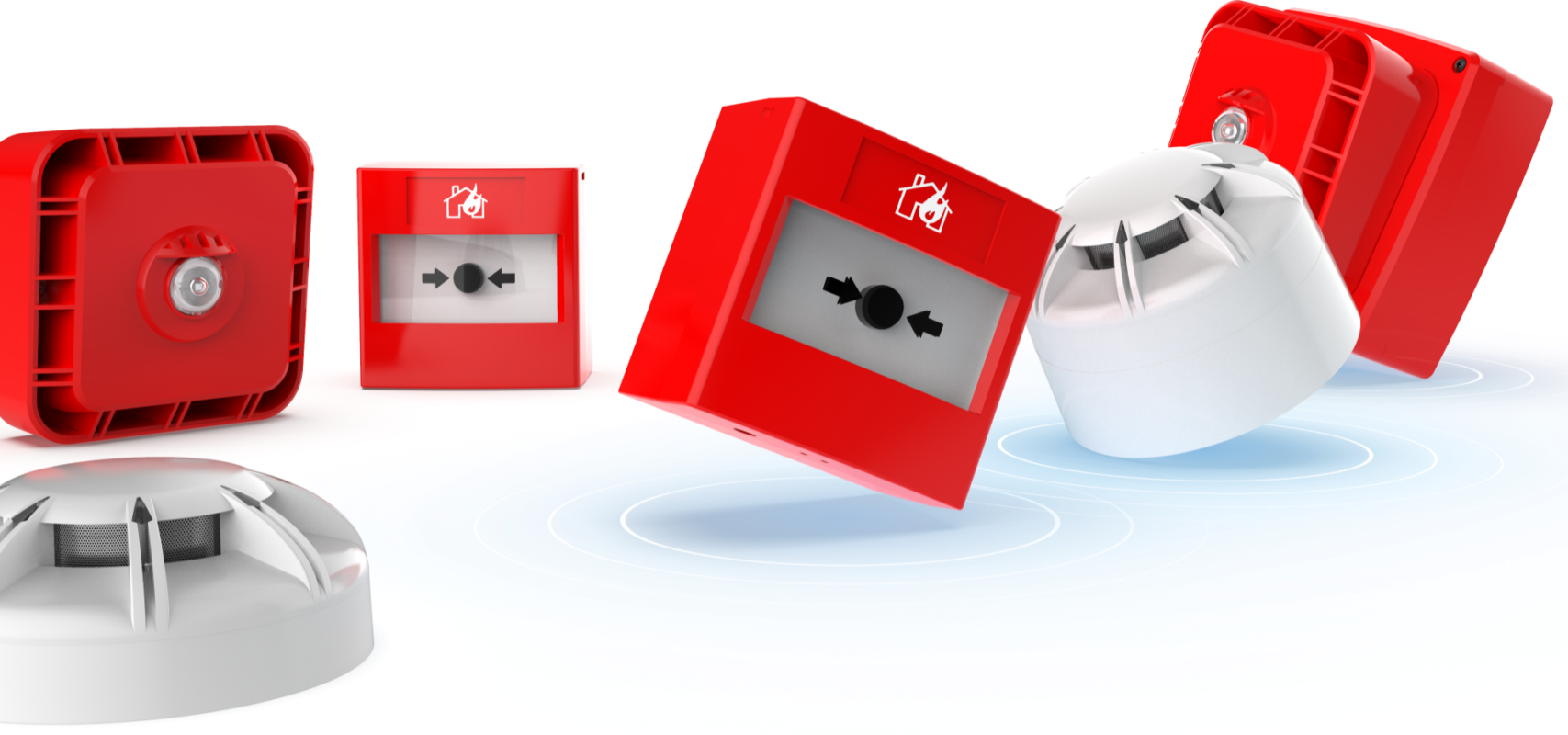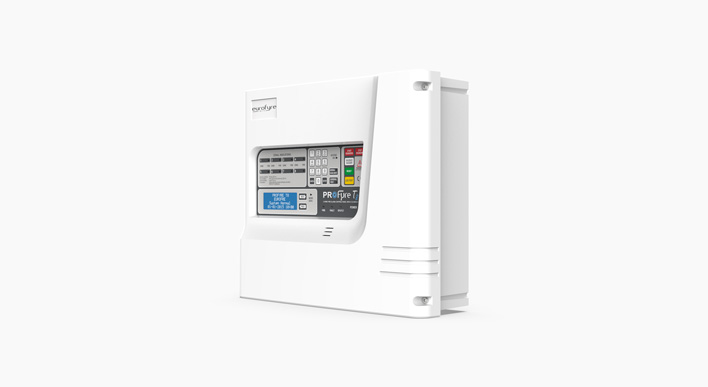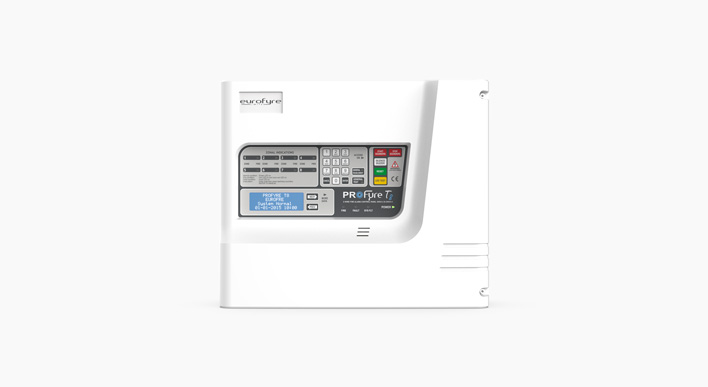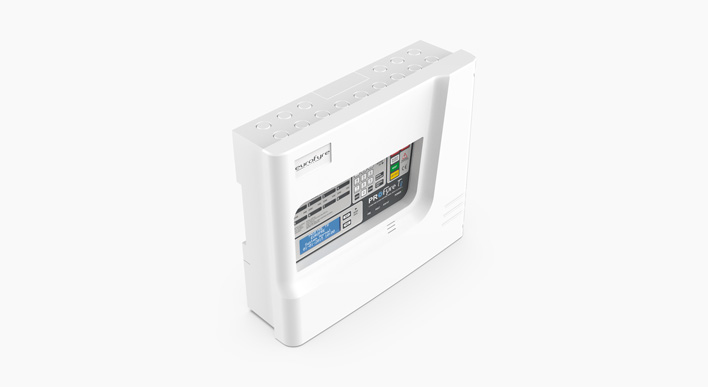Key Features
- Detectors, call points, sounders and ancillaries connected to same two wires
- Addressable radial (zone) or loop wiring
- Selectable sounder tone (panel selected)
- Cable break identification
- Cable short-circuit protection
Overview
Conventional, basic addressable and ‘2-wire’ conventional fire alarm systems have been the installers choice for small to medium sized installations for over a decade, with each type of system providing advantages in terms of equipment cost, installation cost, simplicity or flexibility.
With the introduction of the ProFyre T8, it is now possible to benefit from all of these technologies in a single system package, which is not only easy to install, but also offers complete wiring flexibility where conventional ‘radial’ or ‘loop’ wiring topologies are concerned. The system is therefore ideal for conventional retro-fits, as well as new build projects, including HMO’s where selectable alarm verification is needed to reduce unwanted alarms and building evacuation.
Cabling
T8 is unique, allowing the installer to choose between wiring the system as radials (up to 8) or as a single loop. If conventional radials are chosen, a single pair of wires (1 per zone) connects all of the detectors, call points, warning devices (sounders/ flashers) and interfaces to each set of zone terminals and, since all devices are uniquely identifiable at the panel, the zone wiring no-longer needs to be kept as a true radial, making it possible for 2-core spurs and tees to be introduced within a zone, without affecting device and cable monitoring. This also means that an end-of-line device is no longer required, and provides real savings in time and installation cost.
Cable Break Identification
In the event of a cable break, affected devices will be reported as missing and, since each device is individually identified, the location of the break becomes much easier to find.
Cable Short Circuit Protection
Each radial zone is protected by a short circuit isolator, which is built into the fire alarm control panel. Therefore, a short circuit on the zone wiring, no matter how severe, will not affect other zones or the control panel electronics.
By default, each device is uniquely identified by the fire alarm control panel, with the option to assign a 20 character text label to each.
Auto Configuration
At any time during initial or final commissioning, it is possible to auto-learn the system to obtain a ‘device count verification’ which visually confirms the number and type of devices currently connected and responding correctly. This is a useful feature, and not only assists in fault finding, but also confirms final quantities against plans and expected schedules.
Alarm Verification
Alarm verification combined with local device alarm sounding is an established technique to reduce localised unwanted alarms affecting other occupancies, particularly in HMOs. Each smoke detector is therefore programmable (at the panel) and, if set to verify mode, will only raise a local alarm during the verify period chosen, prior to a full evacuation taking place. During the verification period, if the smoke or heat level drops below the alarm threshold, the affected local sounder/flasher will auto-reset and the system will return to normal without manual intervention.
With this method of operation a ‘cooking alarm’ in one apartment will alarm locally, giving the apartment occupants a chance to clear the smoke before the whole building is evacuated. Also, as a failsafe, if a heat detector alarms, or if a second smoke detector on the system goes into alarm, the system will go into full alarm.
System Monitoring
Since every device is constantly monitored and communicates with the panel at least every 4 seconds, any malfunction will be immediately reported by the panel. This, of course, includes a unique device ID, together with a time and date historic log entry.
Zone Check – Cable Integrity & Zone Identification Facility
The ‘Zone Check’ facility allows you to manually illuminate ancillary device LEDs and turn on the LED flashers of all detector bases connected to a selected zone. This has many benefits, including being able to easily identify devices that are associated with the chosen zone, and also for verification of associated cable runs. (It is also possible to narrow this down to an individual device if required).
Wi-Fyre Wireless Integration

For complete system flexibly, a zone/loop powered Wi-Fyre interface can be connected at any point on the T8 system wiring, enabling matching ‘wireless’ detector, call points, sounders or interfaces to be seamlessly connected to the wired system. This means that, for the first time, wireless devices can now be specified and used on an ‘as-needed basis’ on a simple 2-wire conventional system, without the need for additional power supplies and associated wiring.
Tech Specs
| Detection Circuits | Radial mode – up to 8 radial circuits Loop mode – 1 loop circuit |
| Detection Zones | 2 – 8 zones |
| Zone Capacity | 15 addressable devices per zone |
| Sounder Alarm Output | Loop powered sounders 2 x conventional sounder circuits, 28V nominal, 150mA (20-30Vdc) |
| Fire Relay Output | 1 x fire relay SELV@1A |
| Fault Output | 1 x fault relay SELV@1A (normaly energised) |
| Mains Voltage | 230Vac +10% /- 15% @ 50/60Hz |
| System Voltage | 29Vdc nominal (19-30V) |
| Dimensions (W x H x D) | 370mm x 311mm x 113mm |


